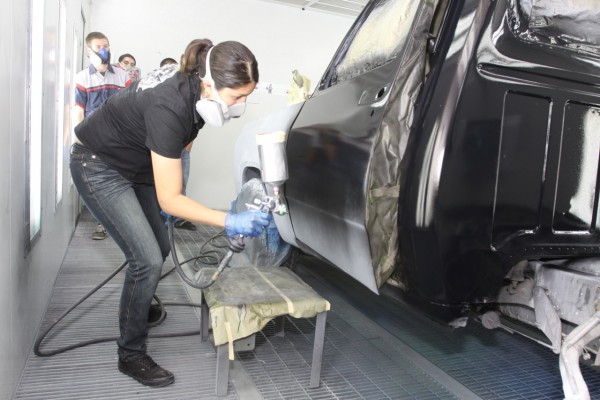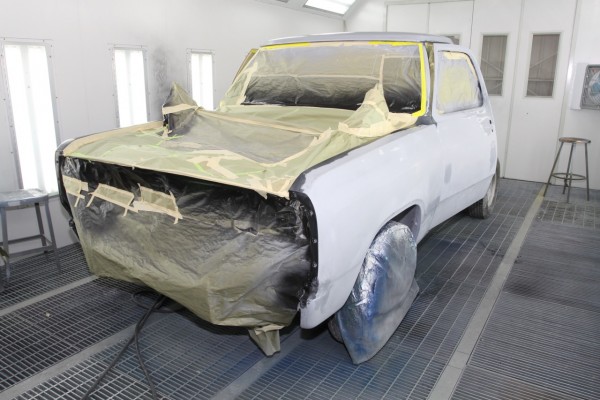If you’ve been a reader Custom Classic Trucks magazine, this 1986 Dodge Ram D-150 might look familiar.
Known as the “High School Custom,” it was featured in a series of build-up articles—a quick Google search will bring up the stories and images. The Dodge spent almost a dozen semesters at Riverside City College’s auto body program and provided numerous students hands-on paint and bodywork experience, which was documented in the magazine.
It also served as the perfect canvas to test out some of today’s water-based paints.
We decided to have our Dodge D-150 sprayed in Auto Air Colors paint. Beyond the merits of using a paint that is absolutely VOC free, Auto Air Colors’ water-based formula allows a second chance if things go wrong in the spray booth. Fisheyes and runs can happen to even the best of painters. While solvent-based paints require paint thinner or reducer to wash off the paint and start over, water-based paint merely requires a garden hose.
After the Auto Air Colors basecoat color has been completed, there is no window to worry about before the clear topcoat must be applied. In Part 1 of this series, the RCC show you how to spray Auto Air Colors water-based sealer and color and then apply Summit Racing’s high-solids fast-drying urethane clear. In Part 2, we’ll show you how to color sand and rub Summit Racing’s urethane clear and then finish with a polish and wax job using Mothers products.































John,
Why does anyone attempt to paint outdoors? If there is no hazard from bugs and dust, then there may not be significant hazard, but I am skeptical. .